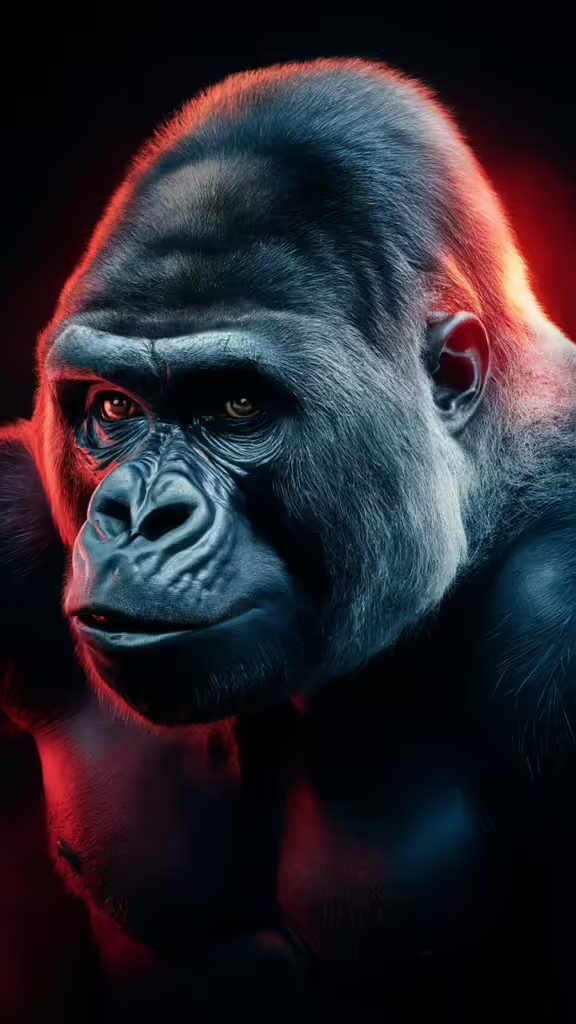
The gorilla’s head is a marvel of evolution, showcasing immense power and intelligence. Their massive skulls house some of the largest brains among primates, allowing for complex social behaviors. This combination of strength and intellect makes the gorilla’s head a fascinating subject for study.
Gorillas possess a pronounced brow ridge and large nostrils, giving them a distinctive and powerful appearance. Their facial expressions can convey a range of emotions, from curiosity to aggression. Observing these features up close reveals much about their social interactions and communication.

The silverback gorilla, the dominant male in a group, has a particularly impressive head. His larger size and more prominent crest signal his leadership and strength. This visual dominance helps maintain order within the troop.
The head of a silverback is not just for show; it plays a crucial role in his status. The crest on his head, known as the sagittal crest, supports strong jaw muscles needed for their tough, fibrous diet. This physical trait underscores his role as both protector and provider.
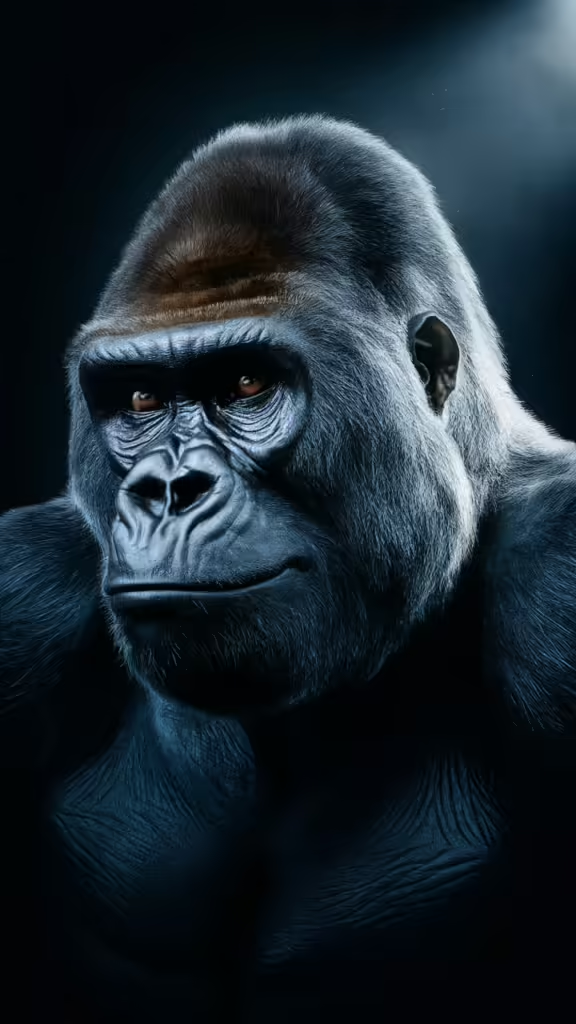
Infant gorillas have smaller, more rounded heads compared to adults, which change significantly as they mature. These changes include the development of the sagittal crest and the enlargement of the brow ridge. Watching these transformations can provide insights into their growth and development.
The gradual changes in a young gorilla’s head are a visual timeline of their journey to adulthood. These shifts are not just physical but also reflect their increasing roles within the group. Observing these stages can deepen our understanding of gorilla life cycles.
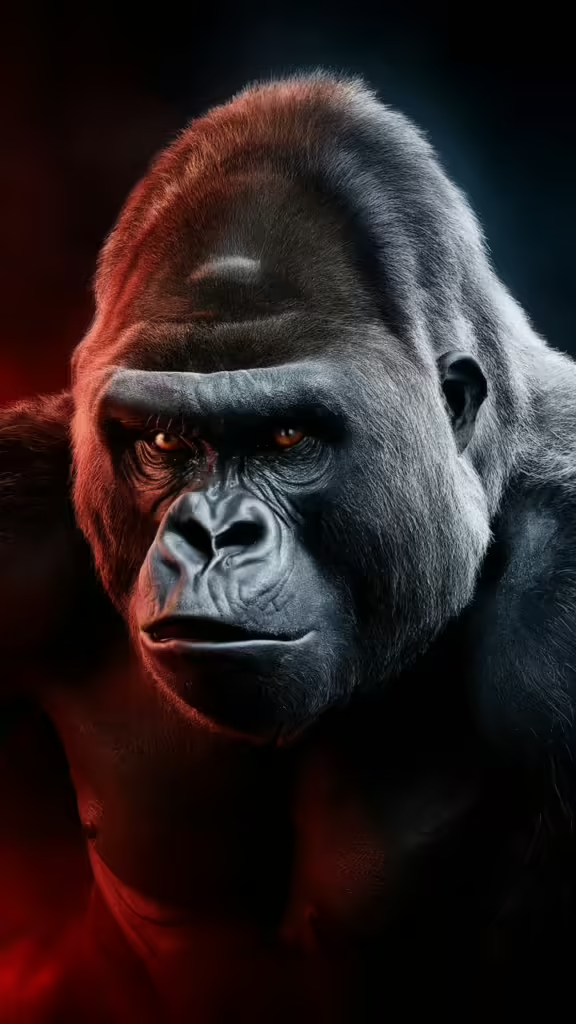
The eyes of a gorilla are deeply set within their heads, providing a penetrating gaze that can be quite expressive. Their eyes can reflect a range of emotions, from curiosity to sadness. Capturing these moments in photographs can be particularly striking.
Gorillas use their eyes not just for seeing but also for non-verbal communication. A direct gaze from a gorilla can be a powerful form of interaction. This aspect of their behavior highlights the depth of their social complexity.
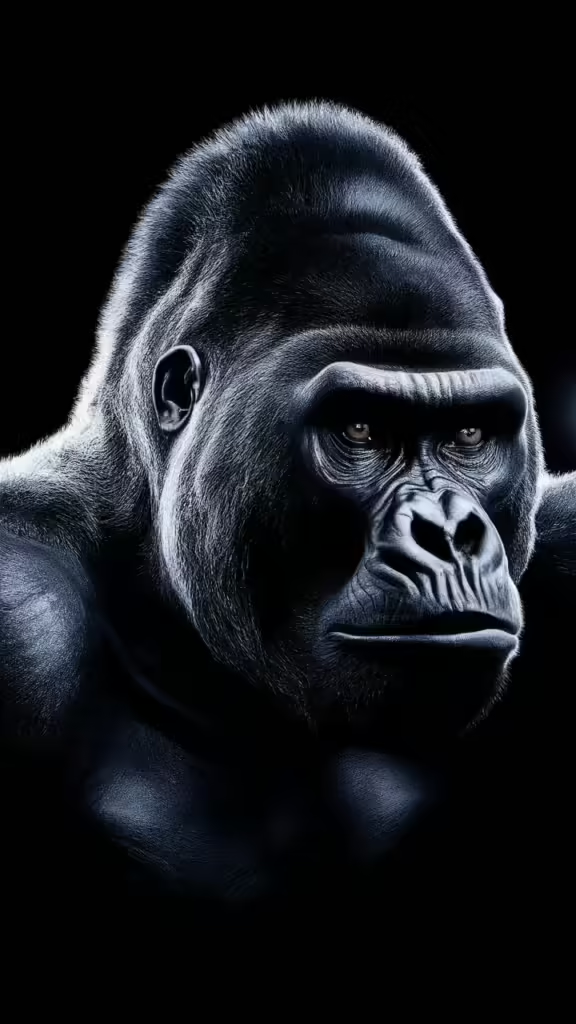
The gorilla’s jaw structure is remarkably strong, designed to handle a diet of tough vegetation. The powerful muscles attached to their jaws are anchored by the sagittal crest. This anatomy allows them to chew through thick stems and leaves with ease.
Their teeth, particularly the large canines of males, are another notable feature of the gorilla’s head. These canines are used in displays of dominance and for defense. Understanding these features helps us appreciate the gorilla’s adaptations to their environment.
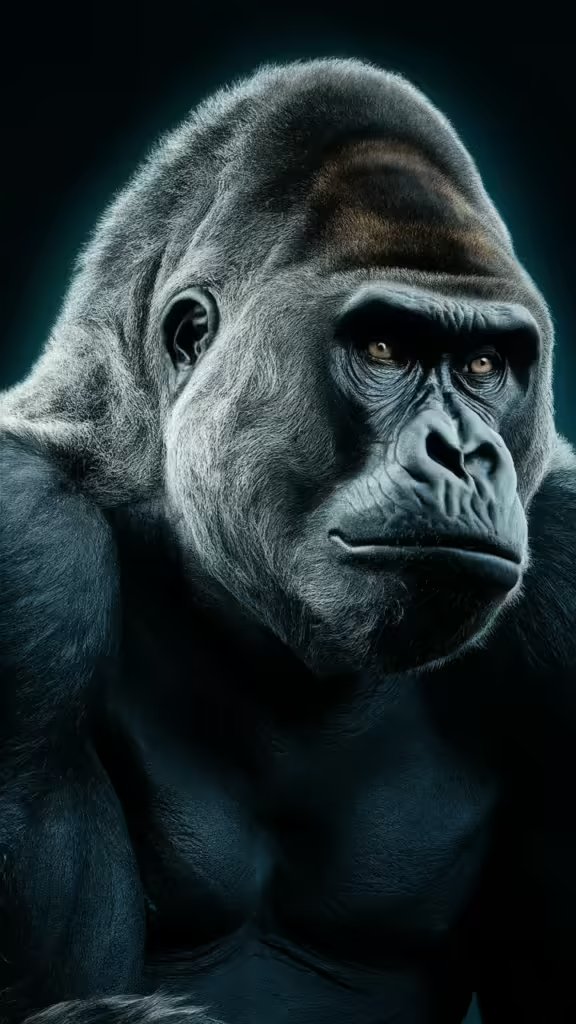
The hair on a gorilla’s head can vary in length and thickness, often reflecting their age and status. Older silverbacks typically have a more pronounced silver patch on their backs and heads. This coloration serves as a visual cue of maturity and leadership.
The texture and pattern of a gorilla’s hair can also provide insights into their health and well-being. Changes in hair condition can indicate nutritional status or stress levels. Observing these details can be crucial for conservation efforts.

The ears of a gorilla, though less prominent, are highly sensitive and crucial for their survival. They can detect a wide range of sounds, from the calls of other gorillas to the rustling of potential predators. This keen hearing complements their other senses.
Gorillas often use vocalizations to communicate, and their ears play a vital role in this interaction. Listening to the calls and responses within a group can reveal much about their social structure. The interplay of sound and hearing is essential in gorilla communities.
